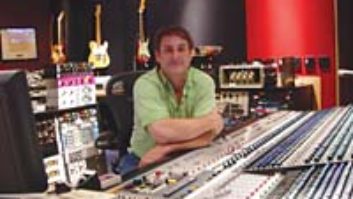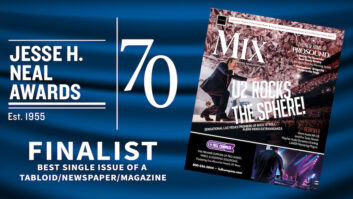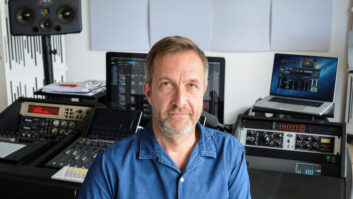Many software updates consist of basically a major feature or two, some minor features, maybe something that used to be optional thrown in for free, bug fixes and new bugs caused by all of the above. But within the space of a few weeks, we’ve seen three companies roll the dice and take major gambles by shifting their paradigms beyond “just another update.”

Take Pro Tools 9, which no longer requires Avid hardware and can work with interfaces from other companies. This one change has multiple ramifications. First, it indicates that Avid, like Apple, realizes that hardware trumps software if you want to survive. You can’t download hardware from a torrent, and the rate of technological change in hardware is rapid and inexorable. As a result, obsolescence— and the need to upgrade hardware—is never far away. To those using NuBus and ISA card audio interfaces as wall decorations, rest assured your FireWire 400 interface will join them at some point.
Second, putting an emphasis on hardware shows that Avid wants to be the hardware company not just for Pro Tools owners, but those who run Cubase, Logic, Sonar, Samplitude, Acid, Live, etc. Besides, they’ll always have an ace in the hole with Pro Tools, because they can build in certain compatibilities (e.g., the editor for Eleven Rack) that other hardware/ software combinations won’t provide. Avid’s serious about this; compare the performance of their latest hardware to previous generations, and it’s clear that the biggest upgrade involved with Pro Tools 9 isn’t so much the software, but the hardware. (And if this doesn’t finally end the perception that those who produce Pro Tools are a wholly owned subsidiary of the Evil Empire, nothing will.)
Meanwhile, Cakewalk has gone in the opposite direction. After picking up the Edirol line and introducing hardware products like the VS-20, VS-100 and VS-700, all that has now gone over to Roland, and Cakewalk is exclusively in the software business. That was underscored with the release of Sonar X1, a top-to-bottom overhaul of their nearly decade-old program. Rather than pile on new features (aside from the ProChannel channel strip, which indeed represents a major improvement over using its older, individual plug-ins), the update concentrates on workflow and user interface redesign—a new look, aggregation of functions into more logical menus, faster workflow, scalable operation from laptop to multi-monitor display, and better handling of virtual instruments.
Normally, when a company changes a paradigm so completely, there’s heavy complaining from the user base. While there has been some of that—and initial releases always have bugs—what’s surprising is how many people immediately got into the changes. Yes, you have to “unlearn” a bit (the key commands, for example, are totally different) and much is unfamiliar at first, but I’d bet that virtually all those who take the time to learn X1 will not return to previous versions.
What I don’t get at all is that WaveLab 7—a major, brilliant update— was being savaged in the Steinberg forums when it was introduced. Say what? Like Sonar X1, its paradigm is very different compared to previous versions, and it did have the “X.0” syndrome (much of which a 7.0.1 update addressed). But as a longtime WaveLab user, I took to it immediately.
I think what’s throwing people is that each element of the program-audio editor, montage editor, publisher/duplicator and batch converter has been broken out into its own “space” rather than thrown together into one big interface. For example, if you’re in the montage, the preferences relate only to the montage, not audio editing. Overall, this results in a faster, more mature program that’s better optimized to handle specific tasks. I can master cuts far faster than before, thanks to features like a loudness view (which makes it super-easy to match album cut levels), view tabbing, some really useful new plug-ins and GUI overhauls that streamline previously awkward click-streams.
I’m somewhat disappointed by those in the pro audio community who don’t cut even a little slack to the initial release of a major update. Code is complex, and it takes a while to find all the bugs, let alone squash them. Rather than expecting perfection out of the gate, don’t uninstall previous versions “just in case,” file detailed bug reports while exploring new programs, and wait for the inevitable updates that address problems. I’ve already mastered several singles and an album in WaveLab 7, done two complete audio-for-video projects in Sonar X1, and just downloaded and opened Pro Tools 9 without incident. Sure, there are few loose ends here and there…but the good far outweighs the bad. More importantly, rather than clinging to the past, the foundation has been built for a stronger future.
Craig Anderton is executive editor for EQ magazine and editor in chief of www.harmonycentral.com.







